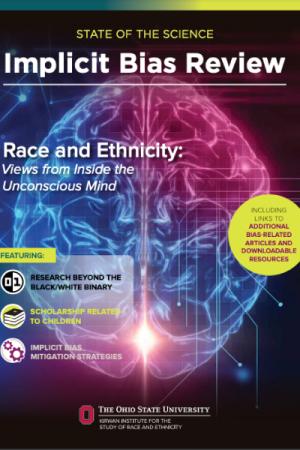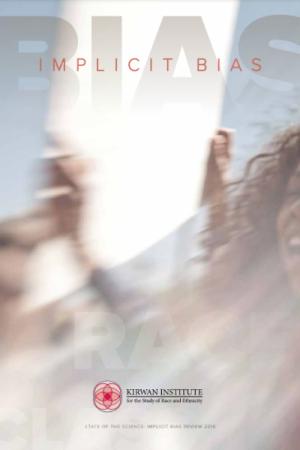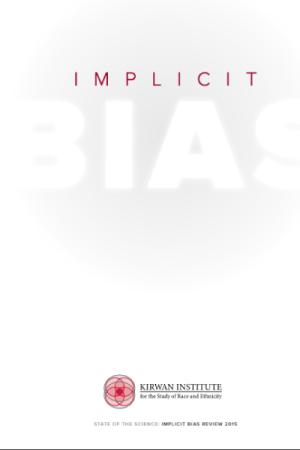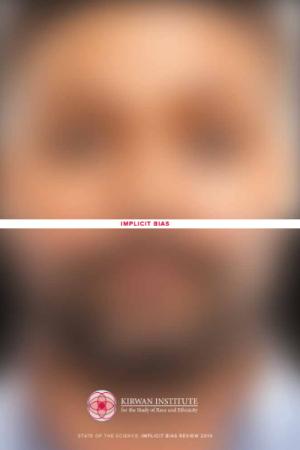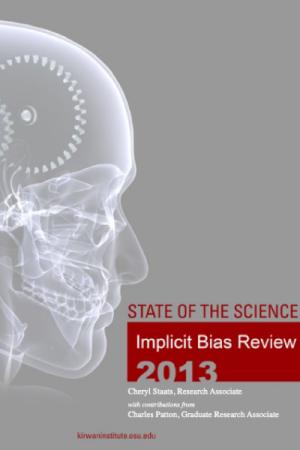Welcome
Welcome to the Kirwan Institute for the Study of Race & Ethnicity’s Implicit Bias Module Series. At the Kirwan Institute at The Ohio State University, we are committed to the creation of a just and inclusive society, where all people and communities have the opportunity to succeed. Our commitment to this mission is why we work so hard to understand and overcome barriers that prevent access to opportunity in our society, such as implicit bias and racial disparities in our education system.
This course will introduce you to insights about how our minds operate and help you understand the origins of implicit associations. You will also uncover some of your own biases and learn strategies for addressing them. Each module is divided into a short series of lessons, many taking less than 10 minutes to complete. That way, even if you’re pressed for time, you can complete the lessons and modules at your convenience.
We are excited that you are starting this process to explore implicit bias and what its operation means for your decisions and actions. Thank you for joining us!
About Us
The Kirwan Institute for the Study of Race and Ethnicity is an interdisciplinary engaged research institute at The Ohio State University established in May 2003. As a racial equity research institute, our goal is to connect individuals and communities with opportunities needed for thriving by educating the public, building the capacity of allied social justice organizations, and investing in efforts that support racial equity and inclusion. Here at the Kirwan Institute, we do this through research, engagement, and communication.
Accessing the Videos
If you experience technical difficulties accessing the videos embedded in this module series, consider switching your browser to Chrome or Microsoft Edge.
Implicit Bias Module Series video transcript
Frequently Asked Questions
Why focus on implicit rather than explicit bias?
Although our modules focus primarily on implicit bias, Kirwan acknowledges that inclusion and equity efforts must also address explicit bias and discrimination in order to create real change. Our explicit and implicit attitudes are related constructs, and many times peoples’ implicit and explicit attitudes are in alignment.
However, even though concepts are related, they are distinct. Someone can act in a biased manner based on their implicit associations, even if they do not indicate an explicit preference for certain individuals or groups. Learning about implicit bias provides a lens to help examine the causes of racial, gender, or other social disparities, even in the absence of explicit intent to discriminate or cause harm.
How long will it take me to complete these modules?
While everyone works at a different pace, these modules should take participants roughly 45 minutes to 1.5 hours to complete, depending on the time spent on activities and supplemental exercises.
Are these modules supported by research?
Yes. The methods and research shared in these modules is supported by our annual flagship publication, the State of the Science Implicit Bias Review. Each year, Kirwan researchers compile studies on the subject of implicit bias into an interdisciplinary literature review in a format that is accessible and easy to understand from a wide range of academic and professional backgrounds.
Does implicit bias reflect my beliefs about equity or inclusion?
We will get more into this during Module 1, but our implicit preferences do not necessarily align with our explicit beliefs. For example, one can believe in equality of all people and still hold a pro-self-identity bias. Importantly, some people possess implicit attitudes that do not align with their own held identities.
If I didn’t intend to be biased in the first place, how will learning about implicit bias help?
Becoming aware of what biases you possess and the decisions that are most likely to be influenced by our unconscious processing can help you build interventions and strategies to prevent the expression of bias and unwanted outcomes. Our training also includes information about empirically based interventions to both reduce the expression of bias and alter the associations we possess.
What is the connection between implicit bias and how people act?
Implicit bias has been shown to impact decision-making across a wide array of sectors, including employment, medicine, and education. However, there are limitations to the extent to which unconscious biases can predict individual behavior. People with an implicit preference for one identity may not act on this bias or make biased decisions, much of this depends on the circumstance.
Does this training apply to me if I don’t have implicit bias?
We will touch on this during the modules, but because biases can be activated across a wide-range of identities, we all hold some implicit preferences. However, even people without an implicit preference can still act in ways that produce discriminatory behavior, such as not speaking up when they see bias in their environment. This need to translate knowledge into action is why Kirwan also emphasizes the importance of being an Active Bystander.
Will these modules eliminate bias?
These modules are not designed to eliminate bias. Rather, we hope that an awareness of implicit bias and how it operates will help participants engage in more equitable decision-making practices and behaviors. These strategies to reduce the expression of bias are only one piece of the puzzle and should be complemented by policies and strategies to address institutional and explicit discrimination.
I’m not a K–12 educator, are these modules for me?
This module series includes examples and activities that are uniquely tailored to the experience of those who work in a K–12 education setting or closely-related field. However, much of the content in Modules 1, 3, and 4 are generalizable enough to apply to most audiences.
